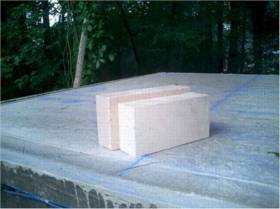Hi I am planning on building a pizza oven soon. Can you use insulation bricks under the fire bricks in the Hearth. I live in Thailand and am having difficulty finding vermiculite or Perlite, Isol, Laowool, Insulfrax etc... I have located firebricks, morter and industrial insulation bricks. I have read that Pumice may be used as an alternative. Has anyone tried this?
Thanks
Thanks







 At the other end of the spectrum you choose oven chambers specifically designed for baking Italian pizza and surround them with very efficient space-age insulators. And there are many points in between. You can install an oven on a 6" non-insulated concrete slab, and it will cook.
At the other end of the spectrum you choose oven chambers specifically designed for baking Italian pizza and surround them with very efficient space-age insulators. And there are many points in between. You can install an oven on a 6" non-insulated concrete slab, and it will cook.
Comment